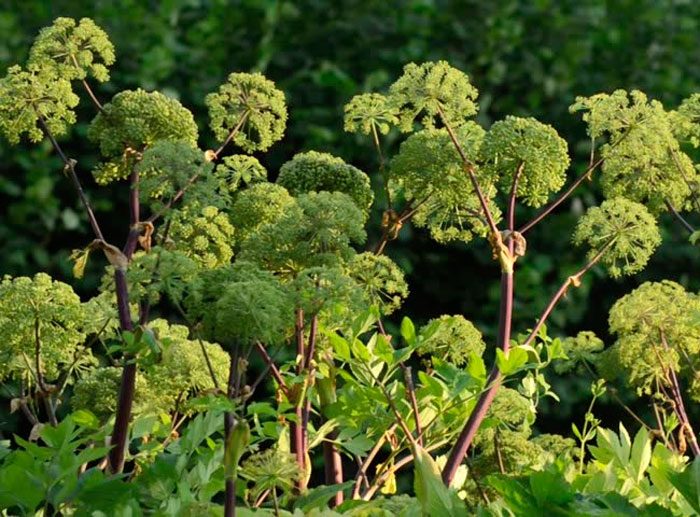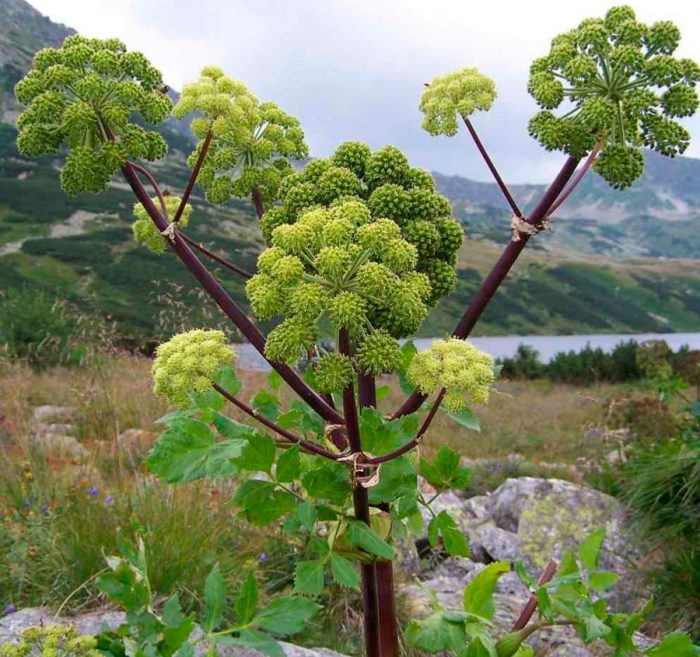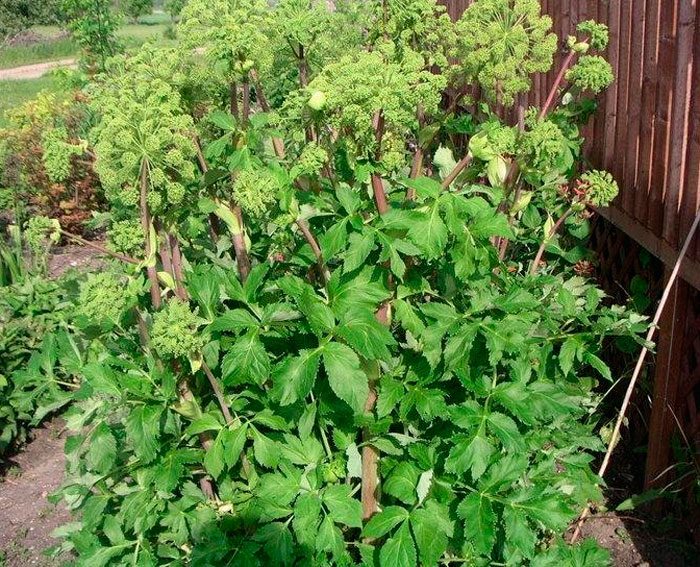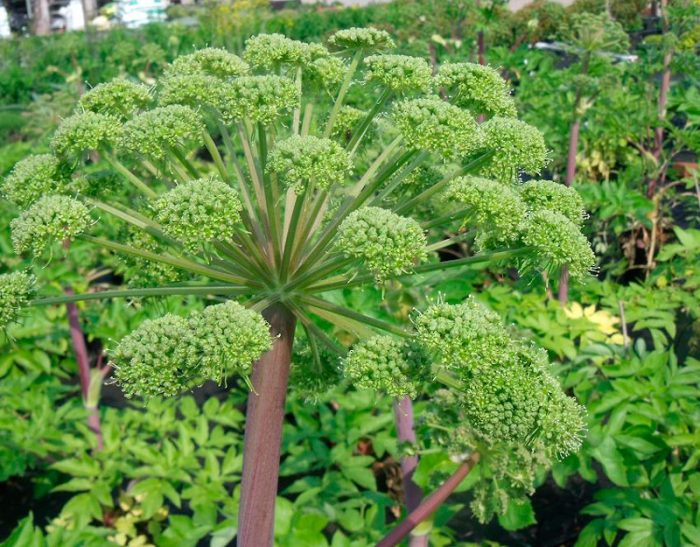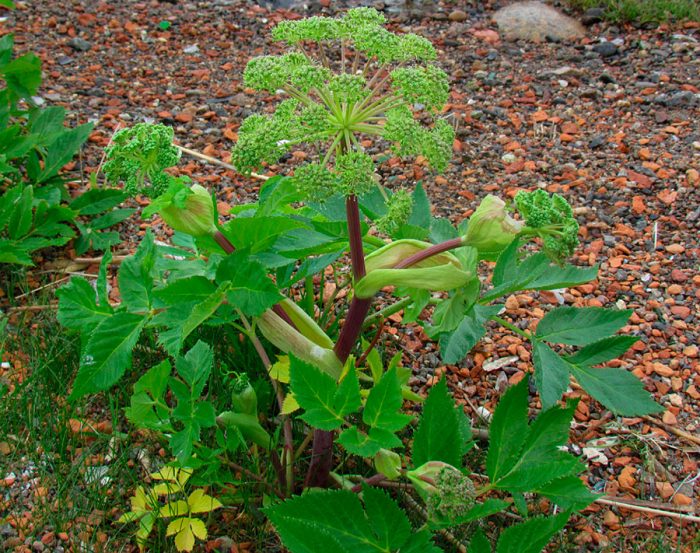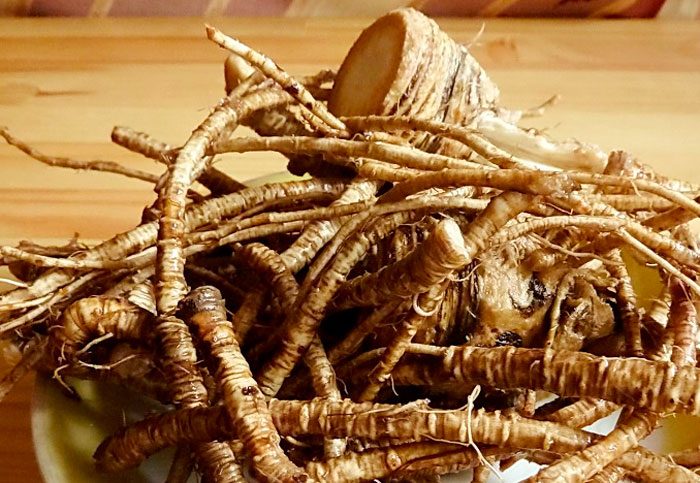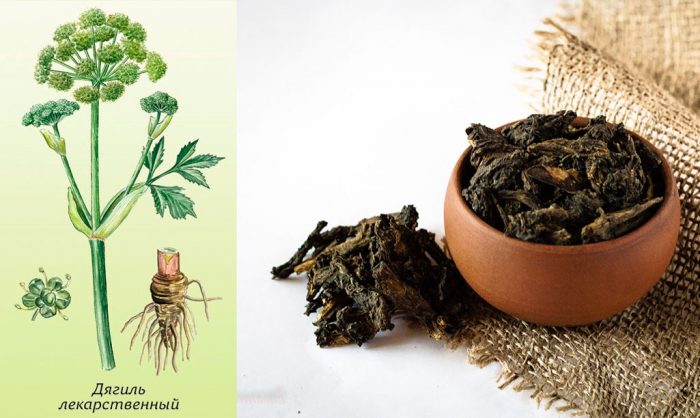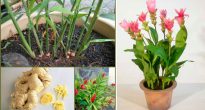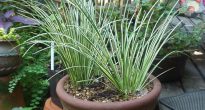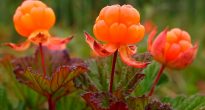The herbaceous plant angelica (Archangelica officinalis), also called angelica, is a species of the genus Angelica of the Umbrella family. The homeland of such a herb is the northern part of Eurasia. Gardeners grow it as an ornamental, medicinal and aromatic plant. It is also called angelica, wolf's pipe. The angelica was brought to Central Europe from Scandinavia in the 15th century, after which it spread to other areas. In nature, angelica prefers to grow in pine-birch and spruce forests, along forest ravines, and also along the banks of streams and rivers.
Content
Angelica features
Angelica officinalis is a herbaceous fragrant biennial plant, which in the first year of growth forms only a basal rosette, consisting of a bundle of leaf plates, while the development of peduncles and shoots occurs only in the second year. A short brown radish-shaped rhizome reaches about 80 mm in diameter, it is overgrown with many adventitious roots. It contains milky juice of white or pale yellow color. A single erect, bare, thick stem reaches a height of about 250 cm, it has a cylindrical shape, in the upper part it is branched, and inside it is hollow. Alternately spaced triple-pinnate leaf plates have large two- or three-lobed segments of an ovoid shape. The basal leaves are large and have a triangular shape and long petioles, while the stem leaves are smaller and have a stalk-enclosing sheath. The umbrella-shaped inflorescence is rather large, complex and almost spherical, it consists of 20–40 rays and reaches about 15 centimeters across. The inflorescence is formed on a peduncle, which has dense pubescence in the upper part. Small flowers consist of 5 petals, greenish-yellow in color, they do not represent any decorative value. The fruit is an elliptical two-seed, yellow or pale green in color, which splits into 2 semi-fruits. Flowering at the bush is observed in the second year of life from June to August. Fruits ripen in July – September.
Growing angelica in the garden
Sowing
Well-lit areas or those in partial shade are best suited for growing angelica, while the soil should be nutritious, well-moistened and permeable to water.The preparation of the site is carried out immediately before sowing; for this, it is digged with the introduction of humus or compost into the soil. Then the surface of the site is leveled. Such a culture is sown in open ground in September before winter; before the onset of spring, the seed will have time to undergo natural stratification. You need to sow seeds thickly, because their germination capacity is relatively low. If excessively dense seedlings appear in the spring, then they will need to be planted, adhering to the scheme of 60x40 or 60x30 centimeters. Crops do not need shelter for the winter.
In the event that the sowing of angelica seeds is planned for the spring, they will need to be stratified. For this, the seed is placed in the refrigerator on the vegetable shelf, where it will stay for 3 winter months. However, do not forget to first combine it with moistened sand and pour the resulting mixture into a container. Most often, with the onset of the spring period, very few viable seeds remain.
Angelica care
After the seedlings appear, it is recommended to mulch the surface of the garden bed with moss, which will have a beneficial effect on the yield of plants. It is very easy to grow angelica on your site, for this you need to water it in a drought, remove weeds from the site, feed it with mineral fertilizers twice a season, often loosen the soil surface around the bushes, and, if necessary, protect them from harmful insects and diseases.
Diseases and pests
In some cases, such a herbaceous plant is affected by fungal diseases, namely, powdery mildew or rust. Experts do not recommend spraying the bushes with chemicals, as they differ in their ability to accumulate toxic substances in themselves. In this regard, it is better to resort to preventive measures: adhere to the rules of crop rotation, feed the plants with mineral fertilizers with a minimum amount of nitrogen, and systematically remove weeds from the garden.
Angelica is distinguished by its resistance to drought, and the most dangerous of the harmful insects for him is the spider mite, which also prefers dry weather. In order to get rid of ticks, the bushes should be sprayed with tobacco infusion. To prepare it, combine three liters of water and 0.2 kg of tobacco or makhorka, after a day the infusion will be ready. The strained infusion must be combined with 50 mg of liquid soap to increase its stickiness, then the bushes and the soil under them are treated with it.
Collection and storage of angelica
Most often, angelica root is used for medicinal purposes, only in some cases its foliage and seeds are used for this purpose. In bushes of the first year of life, the harvesting of roots is carried out in autumn (in September – October), and in plants of the second year of life, in spring (in March – April). They should be carefully removed from the soil, then the remains of the earth are removed from the roots and the aboveground part is cut off. After that, a thorough examination of the raw material is carried out, while it is necessary to reject those roots that were injured by moles or voles, because they lose their medicinal properties. Then the roots need to be rinsed in cold water and cut lengthwise. Pieces of raw materials are laid out in 1 layer on a lattice, paper sheet or thin cloth for drying, they are placed in the shade in the open air or in a well-ventilated room. In order to dry the roots in the oven, it should be heated to a temperature of 35–40 degrees. The foliage is harvested during the flowering period, it is dried in a shaded place in the open air.
After the raw materials are ready, they are placed in cardboard boxes that can be tightly closed, or in bags. It is stored for no longer than 2 years.
Main types and varieties
There are 3 subspecies of Angelica officinalis, namely: Angelica archangelica subsp. archangelica; Angelica archangelica subsp. norvegica; Angelica archangelica subsp. Litoralis. In Russia, no work is underway to develop new varieties of such a plant.The most popular among gardeners are European angelica varieties such as Jizerka and Budakalaszi.
Angelica properties: harm and benefit
The healing properties of angelica
Angelica officinalis contains a large number of useful substances. So, the rhizome contains essential oils, valerian, malic, acetic, angelic and other acids, as well as resins, wax, sugars, carotene, pectins, bitter and tannins. Essential oil is squeezed out of the roots, which is a liquid with a musky smell, it contains protein, fats, proteins, carbohydrates, fiber, fatty oils, phosphorus, calcium, vitamin B12 and ascorbic acid. The oil has such a characteristic aroma due to the fact that it contains the substance ambrettolide.
For a long time, people know that this plant helps to stimulate blood circulation, strengthen the immune system and heart muscle, increase the secretion of pancreatic juice and bile, and also tones the nervous and cardiovascular system. It is used for gout, rheumatism, and kidney disease. To rub the lower back for pain, use an alcoholic tincture of angelica. Its rhizome is included in the fees that are recommended during the treatment of alcohol dependence. Another such root is distinguished by antimicrobial, anti-inflammatory, expectorant and diuretic effect. It is recommended to use it for bronchitis, colds, indigestion, infertility in anemic women, circulatory disorders, prenatal and postnatal weakness and dizziness. Angelica is also used for cystitis and rheumatic inflammatory processes due to the fact that it has an antiseptic effect. In alternative medicine, it is used for wilting and irritation of the skin, as well as for the treatment of psoriasis. The fragrance of this plant is often used in the cosmetic and perfume industry, especially in colognes and perfumes with an oriental bouquet. It is also used in the food industry for flavoring alcoholic and non-alcoholic beverages.
Angelica honey is very valuable; its color varies from amber red to dark brown. Honey can be lard-like, fine-grained, resinous or even thicker. Such honey differs from the rest in that it has a weak ability to crystallize. It has a specific smell, and a sharp pleasant taste with a barely perceptible bitterness and a caramel-candy aftertaste.
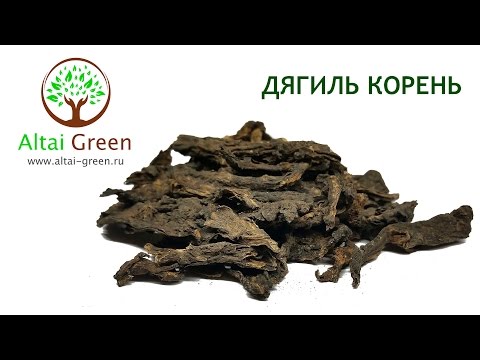

Watch this video on YouTube
Contraindications
Angelica should not be used by people with individual intolerance to the substances it contains. Also, experts do not recommend using it for patients with diabetes mellitus during pregnancy.

